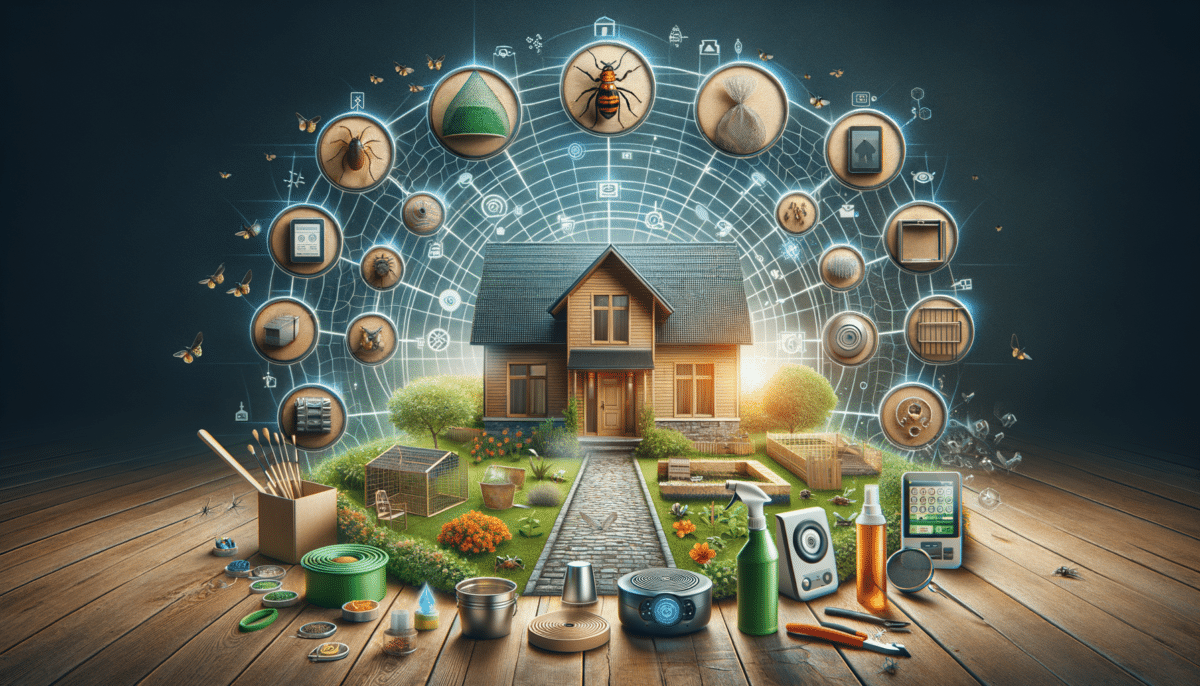Understanding the Importance of Pest Control
Pest control is a crucial aspect of maintaining a healthy and safe living environment. Whether it’s ants marching across your kitchen counter or mice scurrying in the attic, pests can cause significant discomfort and potential health risks. The importance of pest control extends beyond mere annoyance; it is about protecting your home and family from the diseases and damages that pests can inflict.
Various pests, such as rodents, insects, and termites, can cause extensive damage to property. Termites alone are responsible for billions of dollars in structural damage annually. Moreover, pests like mosquitoes and ticks are vectors for diseases like West Nile virus and Lyme disease, respectively. Thus, effective pest control is not just a matter of comfort, but a necessary step in safeguarding health and property.
Incorporating pest control into regular home maintenance routines can prevent infestations before they become severe. This proactive approach not only saves money in the long run but also ensures a safer living environment. By understanding the significance of pest control, homeowners can take informed steps to protect their spaces.
Common Household Pests and Their Impact
Household pests come in various forms, each bringing its unique set of challenges. Understanding the types of pests commonly found in homes can help in developing targeted control strategies.
Rodents, such as mice and rats, are notorious for their ability to chew through walls and wires, leading to potential fire hazards. They also carry diseases like hantavirus and salmonella, posing health risks to humans. Insects, including cockroaches and ants, can contaminate food sources and spread bacteria.
Termites are another major concern, often going unnoticed until significant damage is done. They feed on wood, compromising the structural integrity of buildings. Additionally, bed bugs, although not disease carriers, can cause severe discomfort and allergic reactions.
Each type of pest requires a specific approach for effective management. By recognizing the signs of infestation early, homeowners can implement appropriate control measures, minimizing the impact on their homes and families.
Preventive Measures for Pest Control
Preventive measures are the first line of defense against pest infestations. By adopting certain practices, homeowners can significantly reduce the likelihood of pests invading their spaces.
Sealing entry points is a fundamental step in pest prevention. This includes caulking cracks and crevices, installing door sweeps, and repairing damaged screens. Keeping the home clean and clutter-free also deters pests. Regularly cleaning kitchen surfaces, storing food in airtight containers, and promptly disposing of garbage minimize attractants.
Maintaining the outdoor environment is equally important. Trimming back trees and shrubs, keeping gutters clean, and ensuring proper drainage reduce areas where pests can thrive. Additionally, regular inspections of the home can catch potential problems early, allowing for timely intervention.
By integrating these preventive measures into daily routines, homeowners can create an inhospitable environment for pests, effectively keeping them at bay.
Safe and Effective Pest Control Methods
When preventive measures are not enough, employing safe and effective pest control methods becomes necessary. There are various approaches, ranging from chemical treatments to natural solutions, each with its benefits and considerations.
Chemical pesticides are a common choice for pest control. They are effective but come with potential health and environmental risks. Therefore, it’s crucial to follow label instructions carefully and consider professional application for safety.
On the other hand, natural pest control methods are gaining popularity. These include using essential oils like peppermint and eucalyptus, which repel certain insects. Biological control, such as introducing natural predators, is another eco-friendly option.
Integrated Pest Management (IPM) combines various strategies for a comprehensive approach. It emphasizes understanding pest life cycles and using targeted interventions, reducing reliance on chemicals while maintaining effectiveness.
Choosing the right method depends on the specific pest problem and the homeowner’s preferences. By considering the pros and cons of each approach, effective and safe pest control can be achieved.
When to Seek Professional Pest Control Services
While many pest control measures can be handled by homeowners, there are situations where professional services are necessary. Recognizing when to call in experts can save time, money, and prevent further damage.
Severe infestations often require professional intervention. Pests like termites and bed bugs are notoriously difficult to eliminate without specialized equipment and expertise. Additionally, if a pest problem persists despite repeated DIY efforts, it might be time to consult a professional.
Professionals offer several advantages, including access to advanced treatments and a thorough understanding of pest behavior. They can assess the situation accurately, provide targeted solutions, and offer advice on preventing future infestations.
When choosing a pest control service, it’s essential to research and select a reputable provider. Look for companies with positive reviews, appropriate licensing, and a commitment to safe and environmentally friendly practices.
By knowing when to seek professional help, homeowners can ensure effective pest control and peace of mind.
